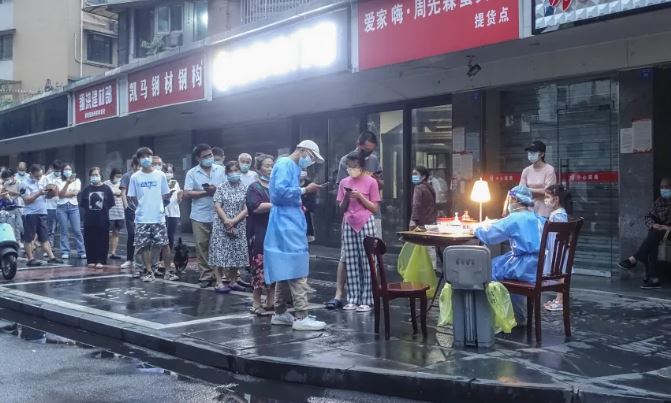Rural areas must guarantee the “supply of medicines” during the Lunar New Year, a period in which the Chinese usually return to their places of origin and in which an increase in covid cases is expected in non-urban areas , assured an expert from the National Health Commission.
“Supplies must above all cover the period of high number of displacements and even the time afterward,” explained the director of the Department of Medical Affairs of the National Health Commission, Jiao Yahui, in an interview with CCTV that is echoed. in the last hours local media.
The official was referring to the one known in Chinese as “chunyun”, the largest annual migration in the world, which happens every year during the Lunar New Year, which in 2023 will fall between January 21 and 27.
Jiao called for rural areas to prepare so that “severely ill people can be transferred to at least one county-level hospital.”
The wave of covid infections has reached its peak in large cities such as Beijing, Shanghai (east), Canton (south) or Chongqing (center) and is yet to hit rural areas, according to a recent study led by experts from the Center of Public Health of Shanghai.
The State Council (Executive) already asked local governments in the middle of last month to give priority to health services in rural areas “to protect the population”, pointing out “their relative scarcity of health care resources”.
At the beginning of December, the authorities launched the dismantling of the ‘zero covid’ policy, which had been in force for almost three years and which consisted of confinements where cases were registered, the closure of borders, the isolation of all those infected and their close contacts and constant PCR tests to the population.
The relaxation of the restrictions preceded an unprecedented wave of infections in the Asian country, which caused scenes of great hospital pressure in several cities.
During this increase in infections, the health authorities “provided support to care for patients with fever in view of the increase in those affected that we had predicted,” Jiao said, adding that “medical institutions at all levels established fever departments.” .
The official gave Beijing as an example, one of the first cities to be hit by a wave of large-scale infections after the relaxation of containment measures and where, according to Jiao, the transfer of fever patients to temporary care points ” relieved the hospital pressure”.
Some voices in the Asian country have criticized the lack of preparation on the part of the authorities before disarming the ‘zero covid’ policy, which has caused shortages of fever medicines and problems accessing medical care.
Jiao assured that the National Health Commission “made preparations” since “early December 2022”, requiring hospitals to increase their intensive care beds.
The rapid spread of the virus across the country has cast doubt on the reliability of official figures, which have reported just a handful of recent deaths from the disease despite localities and provinces estimating that a significant proportion of their populations have been infected. .
The World Health Organization was recently “very concerned” about the evolution of the covid in China and demanded “more information”, to which Beijing responded that it has shared its data “in an open, timely and transparent manner” from the beginning of the pandemic.
The British health sector analysis company Airfinity estimated in recent days that China is currently suffering some 9,000 deaths a day from covid.
As of January 8, the covid will cease to be a category A disease in China, the level of maximum danger and for whose containment the most severe measures are required, to become a category B, which contemplates more lax control , thus marking in practice the end of the ‘zero covid’ policy, dismantled by the authorities after protests took place.

